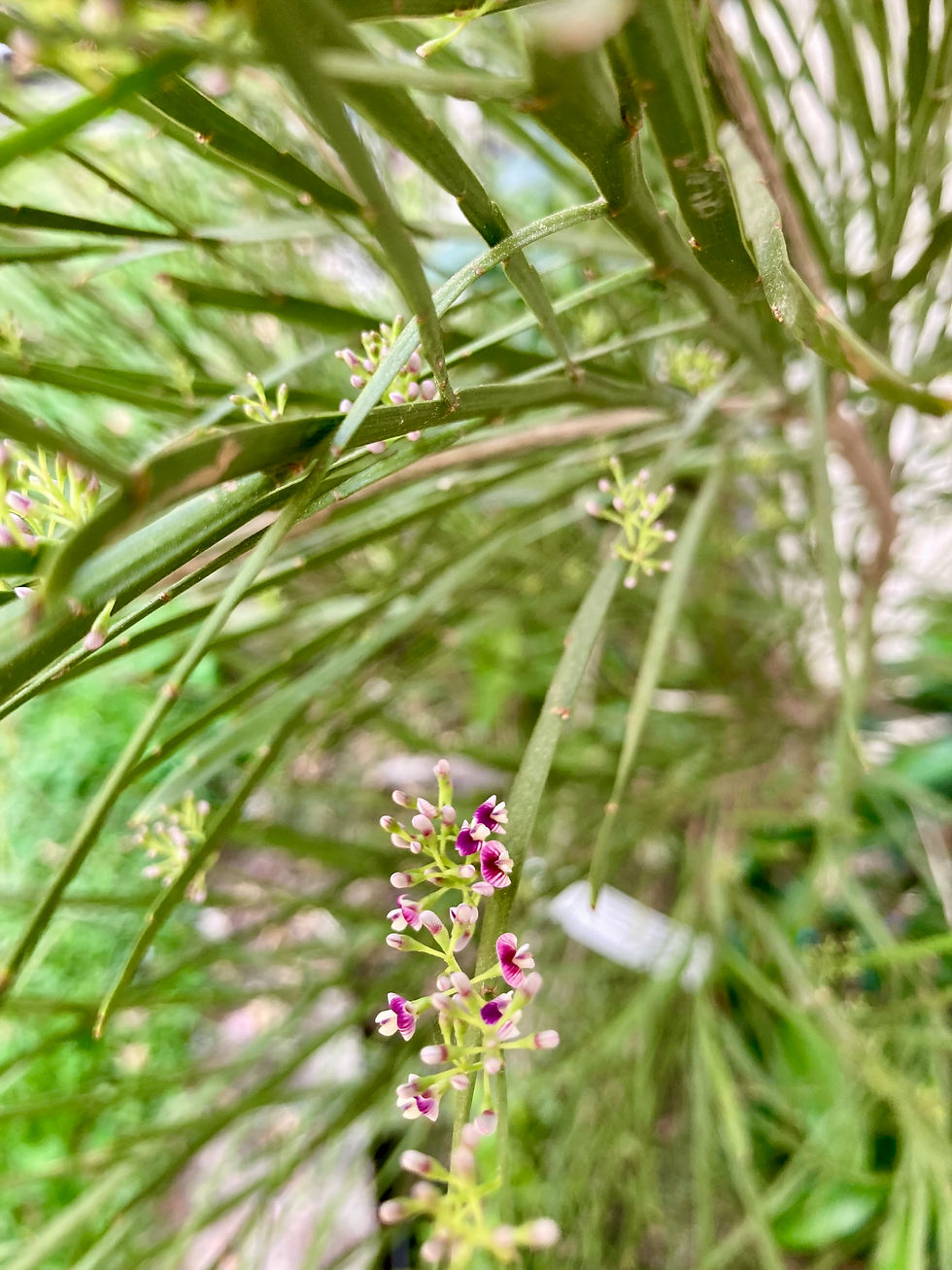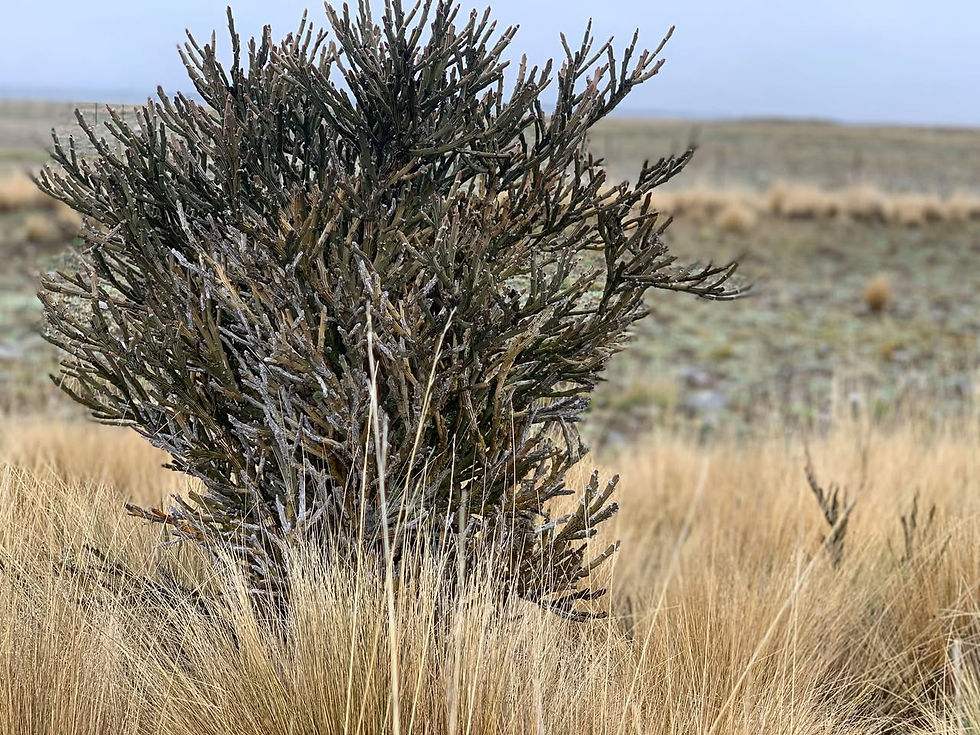
Gracefully composed of flattened evergreen stems, native brooms confront the morphologies expected of any shrub or small tree.
Carmichaelia australis' (Common native broom, mākaka) cascading stems, leaf-like but for any true leaves that may appear, are known as cladodes and perform the role of photosynthesis in the plant. Immature or shaded specimens may bear a pinnate arrangement of leaves, but these typically do not last into adulthood. Its habit is open, upright, and spreading, stems arching as they grow up to 4m high and 3m wide. C. odorata (Scented broom) is slightly smaller, growing 3m x 2m, and has finer stems.

Flowers of white, pale lilac, lavender, and mauve are individually minute (with a five-petal arrangement of banner, wings, and keel), but born in short dense spikes that trail the lines of these architectural shrubs in abundance. Following a spritely bloom beginning in September-October, seeds develop through May or longer and are dispersed via dehiscence, wind, and granivory. Orange seeds and a replum, the structure that remains as the pod walls fall away, indicate the fruit of C. australis (those of C. odorata are less showy).

Growing in disturbed soils, Carmichaelia species habitually weep over open landscapes and perch on vulnerable slopes.
As fabaceous plants -those of the Fabaceae or Leguminaceae (legume/pea/bean) family, Carmichaelia fix nitrogen, allowing them to occupy these tenuous interfaces between the biotic and abiotic.
Nitrogen fixation is the process wherein free, or atmospheric (N2), nitrogen, is converted to ammonia (NH3) in the soil. Atmospheric nitrogen is relatively inert and incompatible with plants until it has been chemically altered. This requires associations with soil microorganisms that possess nitrogenase, the enzyme responsible for the reduction of N2 to NH3.
Adhered to the root systems of fabaceous species are nodules containing rhizobia, symbiotic bacteria that convert nitrogen into ammonia in a mutualistic relationship with their associated plant. In return, the rhizobia recieve habitat and energy in the form of carbohydrates. As limited nitrogen compounds are accessible to species of Carmichaelia, they are able to grow in lean and otherwise prohibitive soils.
As such, Carmichaelia are present through wide ranging habitats in both New Zealand islands: Coastal to montane environments, river terraces, stream banks, colluvium, rock outcrops, talus and fan toe slopes, tussockland, scrub, frost/bush margins, and in swamps.
In response to their ecological niches, the genus demonstrates adaptive radiation, an accelerated development of morphologically diverse, but closely related species. Of 24 endemic species, most exhibit its characteristic cladodes, but Carmichaelia appressa is prostrate, sending its thread-like stems over sand dunes in the Kaitorete Spit near Christchurch. C. monroi (stout dwarf broom) and C. nana (dwarf broom) project bluntly from diminutive mounds appropriate for the rock outcrops, borderland scree, river eyots, and alpine slopes they inhabit. Carmichaelia crassicaulis subsp. crassicaulis (coral broom) stoically observes scrub and subalpine landscapes in the South Island. Rising ruggedly above tussock and rock, the craggy brown forms are evocative of shou sugi ban sculptural installation, their very morphology adapted for the exposed conditions of their isolated habitats.

The more readily available garden species, Carmichaelia australis, C. odorata, and C. stevensonii (a highly ornamental specimen of showering stems and showy flowers) will grow quickly and remain hardy in partial-direct sun and well-drained soils. Their flowers are attractive to bees and insects and their layered forms valuable habitat and refuge for birds and insects.










